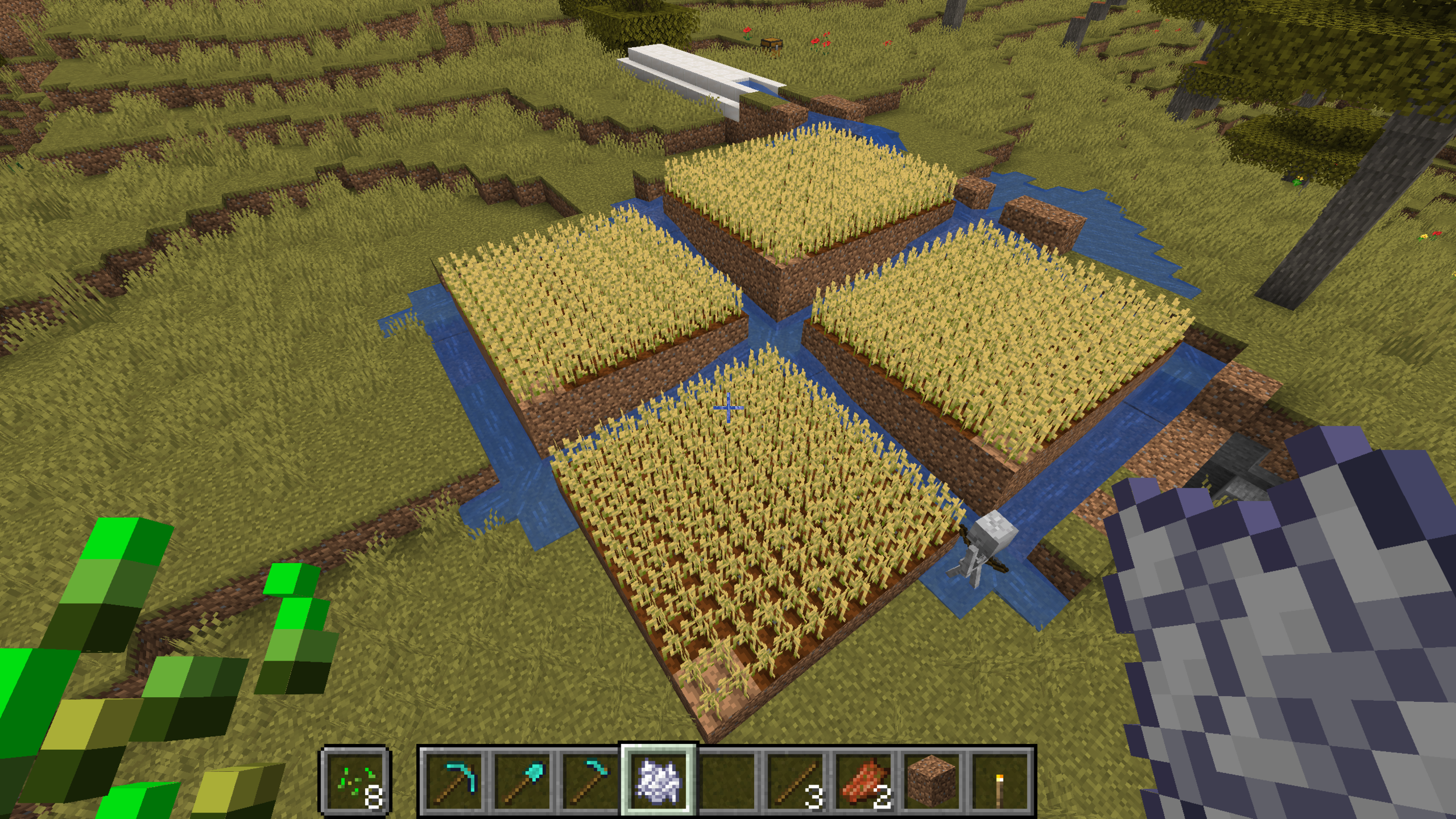Aqueduct
In 2016 I ran my first Minecraft Learning Lab. For one week that summer, I found myself in a computer lab in a room full of 6th-graders, every one of us practically delirious at the fact that we got to sit in a room together for a week, play Minecraft, and call it “learning”.
And so I asked myself what any self-respecting, fun-seeking mentor would ask in this situation:
How can I teach these youth about the important complexities and tradeoffs that define the issue of water rights management?
THE GAME
Students join the server to find themselves in an infinite savannah biome, on survival mode, with no water.
After a bit of exploration, they find this:
An aqueduct. The only water source in the entire world.
Then, I give them each a set of diamond tools and announce the task:
Fill this chest with bread. You have two hours. GO!
And then the fun starts. I’d say it falls into three stages:
Stage One: Excitement
Students begin rushing around the savannah, destroying grass and harvesting seeds. Then they all begin to set up shop around the edges of the water. Everyone is feeling good.
Stage Two: Conflict
Before long two facts become clear. First: There is no way at this rate they are going to be able to plant and harvest enough wheat to make bread to fill the entire chest in two hours. Second, and most importantly: Each person wants the water for himself. Invariably, somebody diverts the stream toward an area of their choosing, thus drying up the stream for everybody else. After a few minutes of the activity people are starting to legitimately become angry with each other. And notably: Every person believes themself to be right.
They begin to look to me, first askance, then directly, then pleading: “Dr. Brain, do something!” (my handle is brainofsteel, and my skin is a scientist in a lab coat.) My response is to shrug my shoulders. “I dunno. Figure something out. But if it gets too heated we have to turn the computers off and go on a walk around the building.” (We did have to do that once.)
Stage Three: Cooperative Innovation
Eventually, someone figures it out: Because of the way water works in Minecraft, a stream can be exploited to travel very long distances AND split into smaller streams that each continue by the same principle. If you’re into grids, like me, you end up with something like this:
…and the grid can be continued on and on…
Then we just set up the garden, and away we go!
Once they figure out a good pattern, the rest of the game is trivial. Everybody gets to split off and plant and harvest wheat however they want, and by the end of it, you have your chest full of bread.
THE LEARNING
After the activity is over, we log out and I load up a Google Maps shot of the Colorado River Delta. I ask:
Does anybody know why the Colorado River has only actually made it to the Pacific Ocean a few times in the past century?
The Colorado River rarely sees the ocean for precisely the reasons the students discovered while playing Minecraft: Water is in low supply, but everybody needs it so they can grow food. It’s a scarce resource. And by the time the upstream parties have had their way, there’s little to nothing left at the end.
And now students haven’t just read about the problem or watched a video… they have, on a small level, actually felt the pain of water scarcity.
GAME DESIGN PRINCIPLES
Simplified Universe: The rules of the actual universe are bent or broken and real-world complexities are stripped away until all that remains is a pure kernel of a concept that can be learned with absolute focus.
Tight Feedback Loops: Ideas that might typically play out over years, decades, or even centuries are compressed into a few hours. This is made possible by the game’s alternate, simplified reality, where rivers can be diverted in seconds with trivial effort, and wheat can be planted and grown in a matter of minutes.
Reduced Consequences: In the case of actual water rights management, the stakes are high: Millions of acres of farmland could dry up and cease to produce. Cities could go without water. People could lose their jobs or even die. The game allows students to feel some of the visceral pain of water scarcity without feeling the full consequences of water scarcity.
Competition and Collaboration: This one is pretty funny. Students are explicitly told that they have a shared goal, but as the game gets underway, they can’t help but compete. Within seconds of starting the game I invariably hear, “Hey, that’s MY land!” Even in the absence of obviously competitive goals, users tend to coerce existing structures into something more competitive.
Ultimately, though, everyone has to step back while somebody reworks the streamflow from the source on down until it becomes more “shareable”. The lessons of the game ultimately extend beyond both the game’s reality and the learning objective into something more profound: In the end, we cannot succeed until we learn to collaborate.







